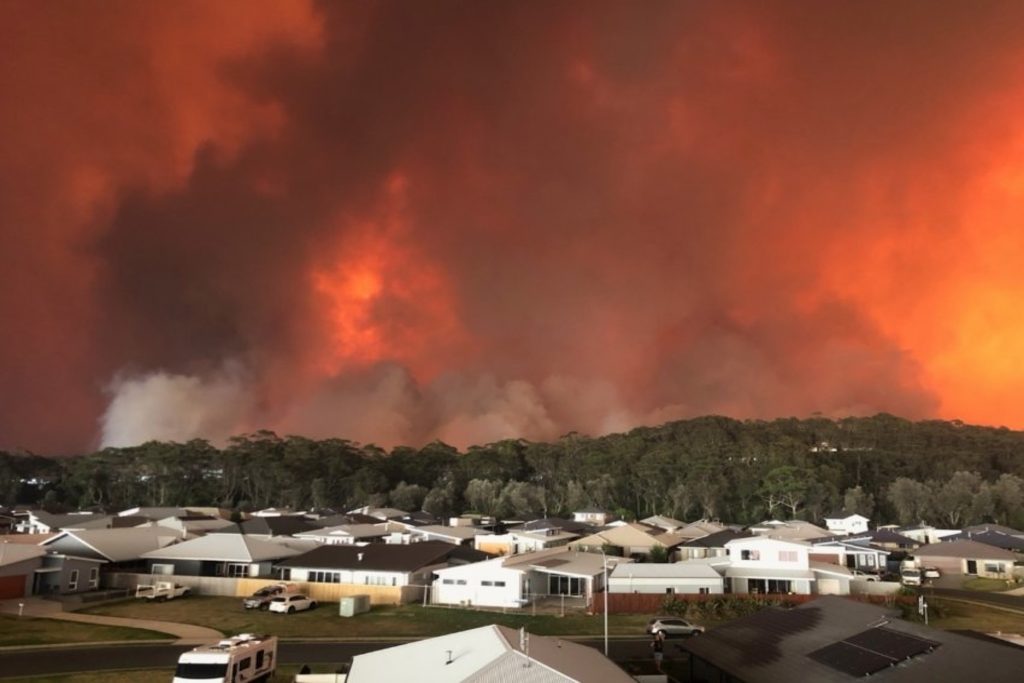BMP Insights: Trick Components and Conveniences of a Bushfire Management Plan
BMP Insights: Trick Components and Conveniences of a Bushfire Management Plan
Blog Article
Vital Tips for Bushfire Administration to Make Sure Fire Defense

Recognizing Bushfire Risk Levels
Understanding the differing degrees of bushfire risk is necessary for reliable preparation and prep work in mitigating prospective threats to buildings and lives. Bushfire risk degrees are usually categorized based on factors such as climate conditions, gas accessibility, topography, and historical fire actions. By understanding these threat areas, individuals and degrees can proactively apply methods to reduce vulnerability and enhance strength despite possible bushfire occasions.
The very first level of bushfire danger is low threat, where the possibility of a bushfire taking place and causing significant damage is very little. Risky degrees symbolize a substantial hazard, with problems conducive to rapid fire spread and severe fire actions.
Comprehending these bushfire danger degrees makes it possible for stakeholders to tailor their readiness and reaction activities appropriately, making sure a proactive and efficient strategy to bushfire monitoring.
Creating a Defensible Area
Effective bushfire administration starts with establishing a defensible room around residential or commercial properties to boost security against prospective fire threats. A defensible area is a barrier area that produces a barrier between a structure and the bordering combustible plant life. This area acts as a critical line of defense, providing firemens a safe area to operate and aiding to reduce the danger of a fire spreading out to the property.
When developing a defensible area, it is necessary to think about the layout of the building and the surrounding landscape. Clearing plants, especially extremely flammable plants, within a specific radius of the property can assist avoid the quick spread of fires. In addition, preserving a well-irrigated area around the building can even more enhance its defensibility.
Regular maintenance of the defensible area is essential to guarantee its effectiveness. This consists of cutting looming branches, getting rid of dead plant life, and maintaining the area without particles. By spending time and effort into establishing and maintaining a defensible space, property owners can dramatically boost their opportunities of safeguarding their homes and assets during a bushfire.
Carrying Out Fire-Resistant Landscape Design
When creating landscapes to minimize the risk of bushfires, incorporating fireproof aspects is vital for enhancing property security and decreasing fire threats. Select plants with high moisture web content, low oil content, and minimal dead plants to lower the danger of fire spread.

Developing an Emergency Situation Emptying Plan
Establishing a comprehensive emergency emptying plan is essential for making sure the security and health of individuals during possible bushfire incidents (BAL Report). An effective discharge strategy need to describe clear treatments to follow in case of a bushfire risk, consisting of assigned discharge routes, setting up factors, and interaction protocols
To begin producing an emergency situation emptying plan, it is necessary to analyze the particular risks and susceptabilities of your area. Identify multiple evacuation courses that bring about secure areas far from the fire, considering factors such as terrain, road availability, and potential threats. Develop interaction networks to sharp locals of an approaching discharge, using techniques such as alarms, message signals, or door-to-door notices.
Consistently testimonial and practice the evacuation strategy with all residents or neighborhood participants to make certain every person recognizes their roles and duties. Conduct drills to test the web link effectiveness of the plan and make any kind of required adjustments. By having a well-prepared discharge plan in position, you can boost the opportunities of a secure and orderly emptying throughout a bushfire emergency situation.
Maintaining Fire Safety And Security Tools
After developing a comprehensive emergency situation emptying prepare for bushfire cases, it is critical to focus on the normal upkeep of fire safety and security devices to make sure ideal functionality and readiness. Regular upkeep of fire safety and security devices such as fire extinguishers, smoke detectors, fire alarm systems, and automatic sprinkler is vital in protecting lives and building throughout a bushfire. When required., carrying out routine assessments, testing, and maintenance of these devices by certified professionals is necessary to guarantee try this web-site they are in functioning order.
Fire extinguishers ought to be examined on a regular basis for pressure levels, visible damages, and proper functionality. By vigilantly preserving fire security devices, people can boost their readiness and response capabilities in the occasion of a bushfire.
Final Thought
To conclude, efficient bushfire administration involves understanding threat degrees, developing defensible rooms, implementing fire-resistant landscaping, establishing discharge strategies, and preserving fire security devices. By adhering to these vital pointers, people can ensure better fire security and security for their residential or commercial properties and neighborhoods. It is very important to prioritize aggressive actions to mitigate the dangers related to bushfires and to be prepared for emergencies.
By recognizing the nuances of bushfire threat levels, creating defensible spaces, implementing fireproof landscaping, producing comprehensive discharge plans, and making certain the upkeep of fire safety and security tools, individuals and neighborhoods can significantly reinforce their strength against the ravages of wildfires - BAL Report. These pointers are not only vital for protecting versus immediate fire hazards however additionally for fostering lasting fire security approaches that can make a significant distinction in the face of intensifying bushfire hazards
High-risk degrees indicate a considerable hazard, with conditions favorable to rapid fire spread and severe fire habits. Normal visit this page maintenance of fire safety and security equipment such as fire extinguishers, smoke detectors, fire alarm systems, and sprinkler systems is essential in securing lives and building during a bushfire.In verdict, efficient bushfire monitoring includes recognizing threat levels, creating defensible spaces, applying fireproof landscaping, establishing evacuation plans, and preserving fire safety tools.
Report this page